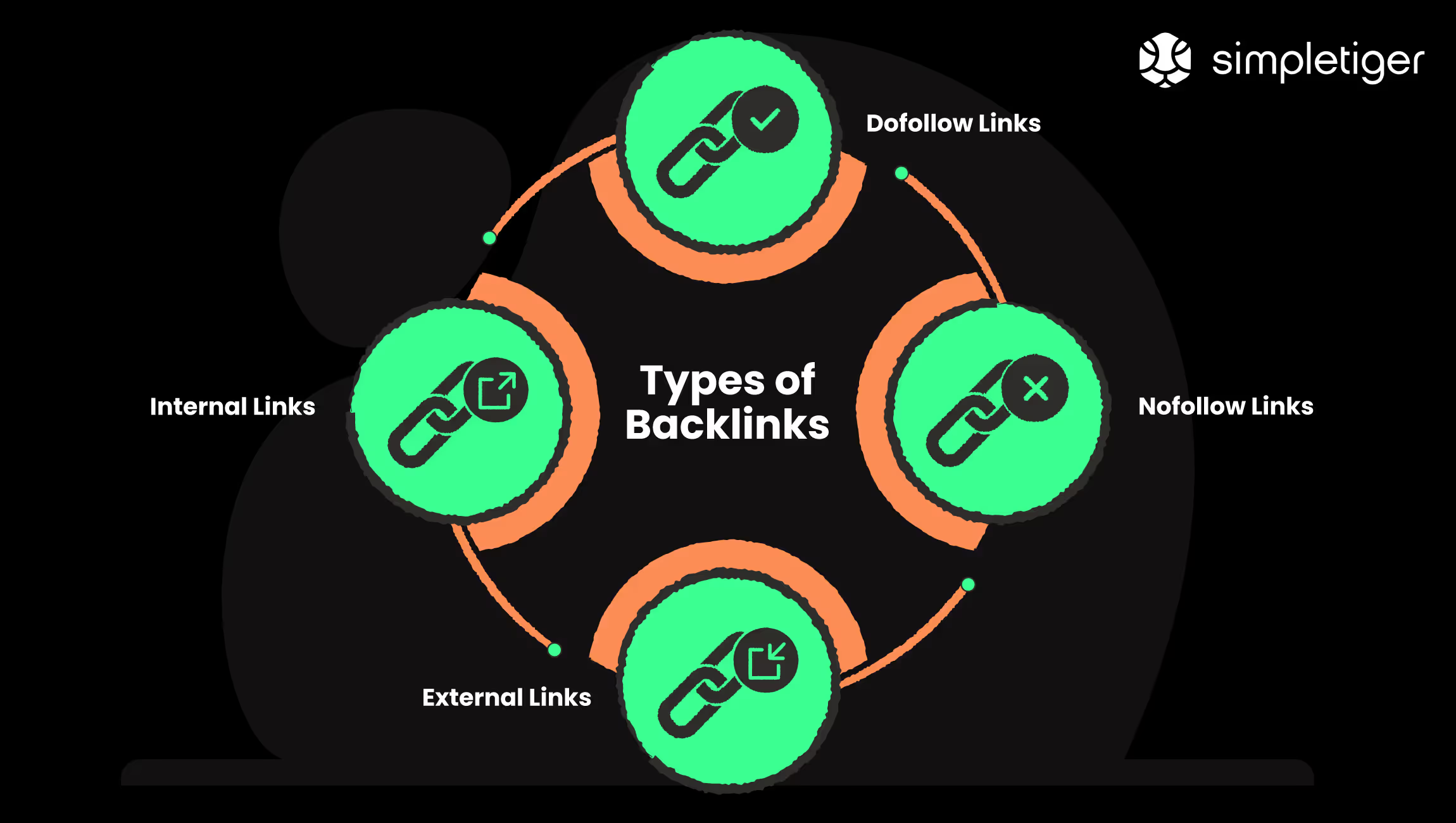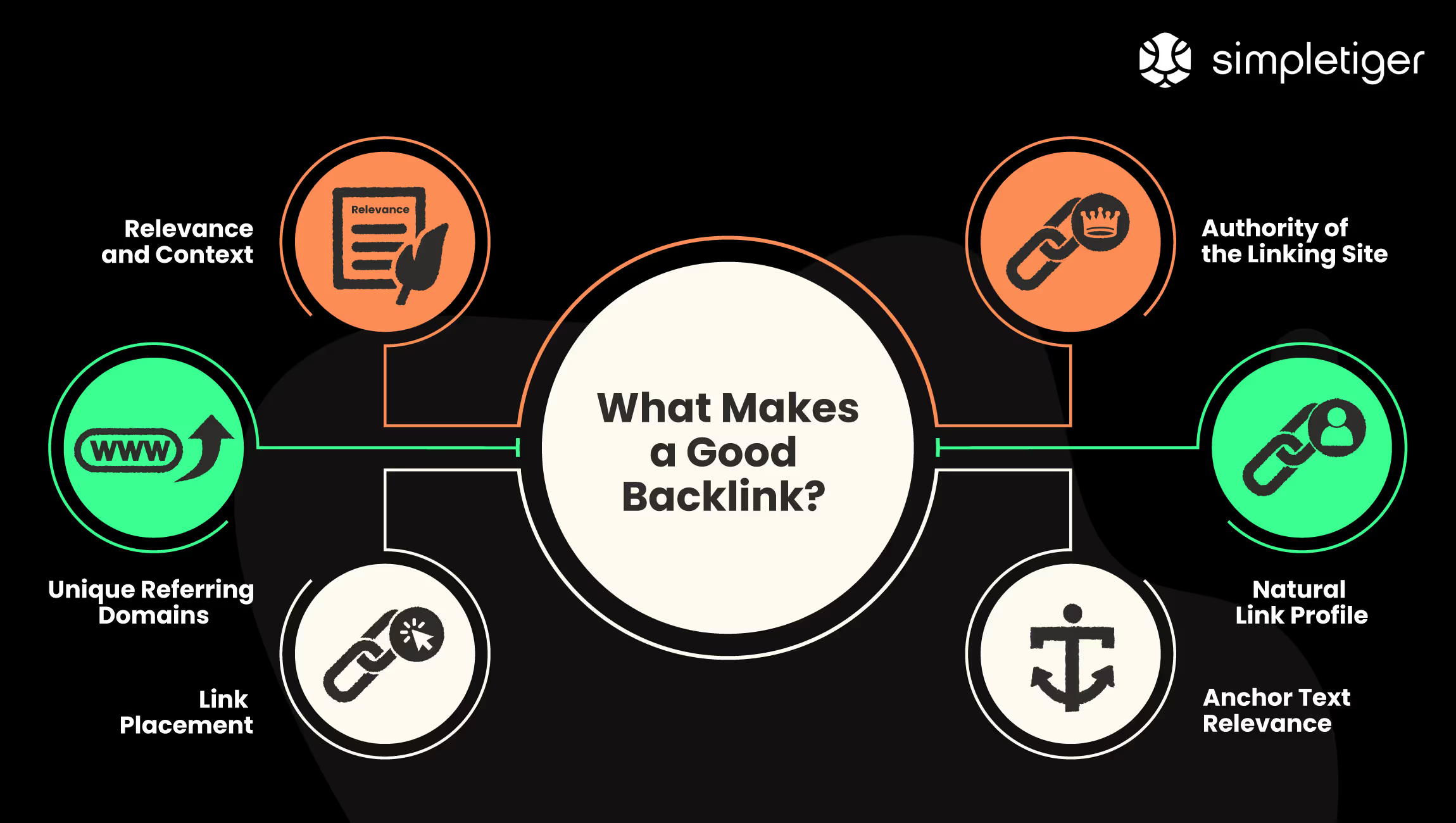Download the SaaS SEO Guide PDF
Over 60+ page SaaS SEO Guide in PDF format so you can read it whenever you want!



Over 60+ page SaaS SEO Guide in PDF format so you can read it whenever you want!







In the highly competitive world of search engine optimization (SEO), backlinks remain a critical factor influencing website ranking.
Many in the SEO community would argue to the contrary, but in our experience, it is not only still the case that backlinks still have a massive impact on rankings (primarily ranking velocity) but it’s also growing as a key factor to overall visibilty with the growing impact of AI search tools.
This article delves into the importance of backlinks, exploring how they function as trust signals to search engines and ultimately impact your website's visibility and organic traffic.
Let's get started.
A backlink, also known as an inbound link, is a hyperlink on one website that points to a page on another website. Essentially, it's a citation indicating that one website acknowledges and trusts the information of another.
If a website reviewing the best SaaS software in a specific industry mentions your company and includes a clickable link to your website, that's a backlink. The more high-quality SEO backlinks you have, the stronger your website's reputation and position in search engine results pages, potentially boosting its ranking and visibility.

Backlinks stand as critical markers for SEO, signaling to search engines the value and credibility of your content. Let's explore the advantages of backlinking, understanding how these external nods to your site form the foundation of an effective SEO strategy.
Backlinks are essentially seen by search engines as endorsements of your site's content. Each backlink signals to search engines like Google that your site is a valuable resource worth citing. Consequently, a robust backlink profile is directly correlated with higher rankings in search engine results pages (SERPs). This improved visibility in SERPs significantly amplifies your site's accessibility to potential customers, directly influencing traffic and engagement levels.
Theoretically, if the content of an article is better and more helpful than any other content out there, it should rank at the top of Google eventually - however, in our experience, the history of an article being referenced by hundreds of sources due to its domain, its age, or its previous social promotion can cause antiquated articles to outrank even the best new content for a long time before the new content catches up.
We see links as not only vital to allowing content to rank for topics that are highly competitive, but also increasing the velocity to rank for both competitive and non-competitive terms.
Links can often mean the difference between ranking a page or piece of content for a keyword topic in a couple of months and 6-12 months, which can often have a massive impact on a businesses’ bottom line.
External websites linking to yours act as conduits, channeling their audience directly to your digital doorstep. This dual stream of organic traffic—from search engines and referral traffic from other sites—enriches your site's visitor base. Importantly, referral traffic is often comprised of individuals already interested in your offerings, heightening the likelihood of conversions, be it in sales, subscriptions, or other targeted actions.
The quality of backlinks plays a pivotal role in shaping your site's reputation. Links from authoritative and reputable sites within your industry serve as powerful affirmations of your site's credibility. This external validation not only strengthens your site's appeal to search engines but also enhances its trustworthiness in the eyes of potential visitors, solidifying your site's standing and competitiveness in the digital landscape.
This is a significantly growing factor to consider as AI tools are positioned to crawl the web and establish trust and authority from how often and in what context a business is referenced. In the short term, links boost authority on search engines, but in the long term, links will also ensure that your brand, content, and business are referenced among relevant searches performed through AI platforms as well.
The diversity of backlink sources is instrumental in broadening your brand's reach. Each backlink serves as a portal through which different audience segments can discover your brand. This expanded exposure increases brand awareness, laying the groundwork for greater traffic volume, trust building, and engagement opportunities. Moreover, heightened brand visibility through backlinks often translates into new business opportunities, collaborations, and an expanded digital footprint.
Collectively, backlinks not only signal to search engines the worthiness of your content for higher rankings but also serve as vital conduits for traffic, credibility enhancement, and brand visibility expansion. Their strategic incorporation into your SEO efforts can yield substantial dividends in terms of your site's performance and overall digital presence.

Understanding the key types of backlinks is crucial for any SEO strategy, as they directly influence your website's search engine ranking and online visibility. Let’s explore the primary four types: dofollow, nofollow, internal, and external.
Dofollow links are vital for SEO as they allow the transfer of link juice from one website to another, directly influencing the receiving site's authority and its ability to rank higher on search engine results pages (SERPs). Typically, unless specifically tagged otherwise, hyperlinks are dofollow, making them the default type that supports a site's search ranking power.
Nofollow links were introduced as a means to combat spam and prevent the manipulation of search engine rankings. These links are tagged with rel="nofollow", rel="sponsored", or rel="ugc" attributes, instructing search engines to disregard the link for ranking purposes. Though they don't pass on ranking power, nofollow links are beneficial for driving traffic, enhancing brand exposure, and contributing to a well-rounded backlink profile favored by search engines. They're especially useful in sections prone to spam, such as comments and forums, as well as for paid links and user-generated content, helping to maintain the integrity of search results.
Internal links forge connections between pages on the same site, using relevant keywords in their anchor text to establish and enhance contextual links. This strategic interlinking bolsters the authority of pages, distributing it across the site based on the context and relevance of the content, thereby aiding in site-wide SEO optimization. They also improve user navigation, leading visitors through a logical path of related content, which can enhance user engagement and reduce bounce rates.
For efficient management and analysis of your internal linking strategy, consider using Linkscout. Linkscout scans your site, analyzes link data, identifies opportunities for improvement, and automates link insertion, helping you optimize your internal link structure effectively.
External links are what are typically referred to as backlinks, and these are the primary sources of outside authority that help boost a site's rankings. They are the cornerstone of link-building strategies and services, providing external validation of a site's content and quality.
Mastering the use of these backlink types is fundamental to developing a diverse and effective link ecosystem that supports long-term SEO success and a better user experience.

Not all backlinks are created equal; while high-quality links can significantly boost your SEO rankings and credibility, low-quality or spammy backlinks can harm your site's reputation and potentially lead to search engine penalties.
Understanding what distinguishes a high-quality backlink from a low-quality one is key to guiding your link-building efforts effectively. Here's what to focus on:

While building backlinks is crucial for SEO success, it's vital to navigate this path ethically and strategically. Let's explore some common mistakes to avoid:

Let's delve into seven effective methods to acquire valuable backlinks and elevate your website's online presence:
Analyzing the backlinks pointing to your web pages is essential for SEO success. Here's a concise guide to using four powerful tools for this purpose:
Each tool provides unique features for backlink analysis, from detailed reports in GSC and Bing to comprehensive data in SEMrush and Ahrefs. Regularly monitoring your backlinks with these tools is essential.
Building high-quality backlinks is an ongoing journey, but by understanding the importance, strategies, and common pitfalls, you're well on your way to strengthening your website's foundation and unlocking its full SEO potential.
Ready to take your SEO game to the next level?
Explore how SimpleTiger can help you design and implement an effective link-building strategy tailored to your website's unique needs and goals.
Take the first step and book a discovery call today.

Sean is Chief Operating Officer at SimpleTiger, responsible for operations, process creation, team utilization and growth, as well as sometimes direct client consultation.
Over 60+ pages detailing how to grow your SaaS company using a proven SEO process.


Schedule a Discovery Call and see how we've helped hundreds of SaaS companies grow!




Actionable insights to help you grow your SaaS and dominate your search market!